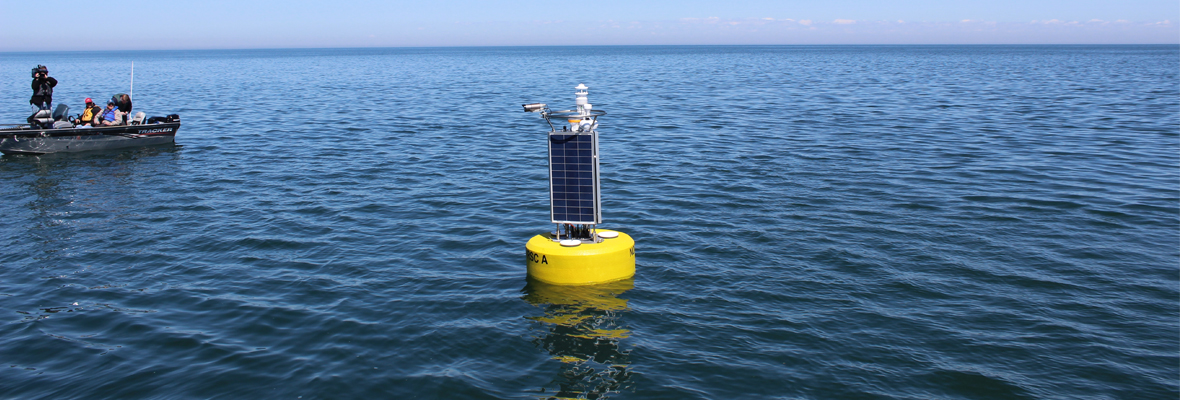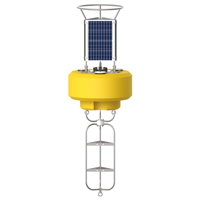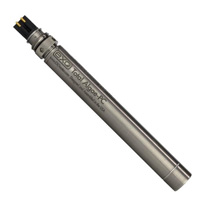Offshore buoy monitoring systems, the advanced instruments they carry, and the data they provide are used in a broad range of applications. Some of these include scientific research, marine and weather forecasting, seasonal forecasting, planning for extreme weather events, planning for and provision of assistance to fisheries, and calibration of satellites, and protecting life and property at sea.
In this post, we will highlight some of the features that distinguish offshore buoys from other kinds and explore some of the features and benefits of this kind of system. We will then showcase a few examples of the types of work people can do with these offshore buoy monitoring systems.
Offshore Buoys in Focus
For applications in demanding marine environments, offshore buoys should be constructed of high-density foam with heavy, protective polymer skin, and an indestructible, stainless-steel frame. They must have enough buoyancy to stand up to the wave action they will face, sufficient power to operate without assistance, the ability to transmit to shore and the right capacity for your equipment. Beyond that, different systems might meet your needs, depending on the application and environment.
NexSens offshore buoys offer customizable buoyancy and protective solutions. This enhances performance and durability while minimizing damage to your equipment—and guarding the integrity of your data.
Offshore buoys placed near the coast, in very calm waters, or with monitoring sensors attached to them, may make use of single-point mooring. Offshore buoys with sensor strings or monitoring sensors deployed directly beneath them in the water column need to be anchored with two-point mooring.
Wireless communications are essential for offshore buoy monitoring systems. Ideally, your project’s offshore buoy system will have one or more waterproof telemetry modules that are securely mounted to it. This allows the buoy to transmit data from offshore to any device, via cellular, radio-to-shore, or Iridium satellite.
With all of these requirements in place and the right instrumentation, you are ready for offshore buoy monitoring. Here are some great examples of offshore buoy monitoring systems in action.
Scientific Research
In 2016, scientists with the University of Washington (UW) and the National Oceanic and Atmospheric Administration (NOAA) launched an environmental sample processor (ESP) off the coast of La Push, Washington. The aim of the project, like the one in Florida, is to watch for algal blooms and their toxins, but with a specific research goal.
In this case, the offshore buoy system autonomously monitors in near-real-time for six algal species that emit a harmful toxin called domoic acid. The ESP was deployed in the Olympic Coast National Marine Sanctuary, 13 miles offshore. The location is in a known transport path where harmful algal toxins can easily reach coastal beaches, posing a threat to shellfish.
Approximately 50 feet below the surface, the buoy automates water-testing that typically demands both onsite sample collection and lab analysis. Because the data is transmitted in near-real-time, public health officials and coastal managers can access data on algal species biomass and bloom toxicity at any time through the Northwest Association of Networked Ocean Observing Systems (NANOOS) website.
The offshore buoy monitoring system allows coastal managers to access early warning data, informing proactive shellfish toxicity testing. This, in turn, enables timely decision-making on closures and shellfish harvesting opportunities.
The data will also get put to work by UW oceanographers who are developing a computer model called LiveOcean. This forecasting tool simulates how currents move and impact coastal conditions.
Wildlife Management
Offshore buoy monitoring systems help wildlife managers achieve a variety of goals. Across the world in Western Australia (WA) and right here in the coastal waters of New York in the United States, teams are using buoys to assist threatened whales.
A team of marine wildlife scientists with the Sustainability and Biosecurity section of the Department of Primary Industries and Regional Development (DPIRD) in WA have developed a GPS-powered, real-time tracking tool for whale rescue. The tool is controlled by a customized motherboard and transmits positional data using an Iridium satellite modem. Transmission parameters can be altered remotely to preserve battery life or provide more positional data.
Currently, there are 10 of these trackable buoys deployed off the coast of WA with teams of specialists in whale disentanglement assigned to them. The offshore buoys provide real-time data and monitoring before any potentially dangerous attempts at disentanglement.
Closer to home in New York, scientists at Woods Hole Oceanographic Institution (WHOI) deployed an acoustic offshore buoy near New York City’s Fire Island to protect threatened North American right whales. These whales, which number only around 300 to 350, migrate past this coastline.
The acoustic buoy deploys special software developed at WHOI to interpret right whale sounds as the animals pass by. The software interprets sounds collected by a hydrophone on a frame on the ocean floor.
The data transmits every two hours and compares detected sounds against a library of known noises with the help of a human analyst. The buoy also tracks sounds from other baleen whales, and automatically sorts and processes them into data points.
This is, of course, a custom-designed and built system. However, any offshore buoy monitoring system can be customized to a fairly impressive degree, especially with the right assistance.
Community and Public Health Initiatives
At Florida International University (FIU), teams are already monitoring for signs of red tide, thanks to data buoys. 2018’s red tides were serious, and fatal for some wildlife, including manatees, fish, and sea turtles.
The FIU team deployed the buoy to monitor for the first signs of red tide, which poses dangers to humans and animals. In fact, because red tide can cause respiratory problems, monitoring for it is an ideal task for an offshore buoy monitoring system. As waves move the cyanobacteria that cause the blooms, the organism is aerosolized, making it more dangerous.
The FIU team developed and constructed their buoys to monitor water quality from the Everglades to the bay in southeast Florida. To monitor water quality in the bay, they aim to capture all important events, monitoring every five minutes, and uploading data every 15. The offshore buoy system monitors chlorophyll, DO, pH, turbidity, and water temperature.
The Bottom Line
These offshore buoy monitoring systems all do different things, but they share a few traits. They are rugged, designed to stand up to the rigors of the ocean. They are equipped with the latest telemetry options for real-time data transmission. And they are customized to meet the needs of a broad range of applications.
To find out more about which offshore buoy monitoring system might work best for your project, reach out to the NexSens team today. We can guide you through the process and ensure your final result is optimal.
Equipment
The NexSens CB-650 Data Buoy is designed for deployment in lakes, rivers, coastal waters, harbors, estuaries and other freshwater or marine environments.
The YSI EXO total algae sensor is a digital smart sensor for helping monitor, mitigate, and manage the impacts of harmful algal blooms.
WQData LIVE is a web-based project management service that allows users 24/7 instant access to data collected from remote telemetry systems.





0 comments